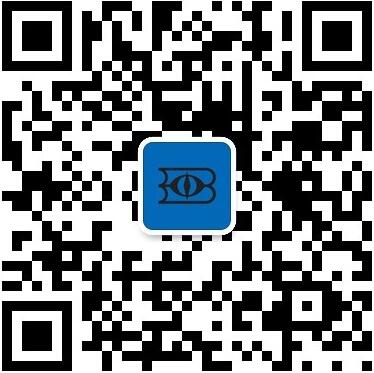【国外标准】 Standard Test Methods for Resistance of Adhesive Preparations in Container to Attack by Bacteria, Yeast, and Fungi
本网站 发布时间:
2024-02-28
开通会员免费在线看70000余条国内标准,赠送文本下载次数,单本最低仅合13.3元!还可享标准出版进度查询、定制跟踪推送、标准查新等超多特权!
查看详情>>
适用范围:
5.1 These test methods are used to demonstrate whether an adhesive preparation is sufficiently protected with biocide to resist attack by bacteria, yeast, and fungi during its storage life. They are patterned after methods used by biological laboratories serving the adhesive industry.5.2 These test methods may also be used to determine the efficacy of different biocide systems against specific microorganisms.5.3 These test methods are especially useful when tested against wild-type microorganisms which have been isolated from contaminated adhesives as an aid in determining the amount and type of biocide necessary to kill or inhibit the growth of the contaminants. If an isolated microorganism not generally used as a challenge organism, is chosen as the inoculum, it is important to identify the organism and determine on which medium and under what conditions it will grow, in order to demonstrate the efficacy of the biocide.5.4 The results obtained when using the procedures given in these methods apply only to the species which are used for the testing. The test species listed in Section 9 are frequently used by laboratories to test for antimicrobial properties, but they are not the only ones which could be used. Selection of the species to use for these test methods requires informed judgment by the testing laboratory or by the party requesting the tests. It is also important that species which commonly attack adhesives be used. See 9.4.5.5 The presence of an active biocide carried over from the adhesive specimen to the agar could have an inhibiting effect on the growth of microorganisms, resulting in no growth during the span of a normal incubation period, when in fact, viable microorganisms are present, but their growth has been slowed down or held in stasis. The use of Letheen agar and broth is recommended to neutralize the effect of this carry-over.NOTE 4: Letheen agar may be used for the streak plates, or if another agar is chosen for testing, a Letheen agar plate could be streaked as a control to test against the neutralizing effect. Even more effective would be diluting the challenged adhesive specimen with Letheen broth and running Letheen agar pour plates. See Note 1 and Note 3. Extending the incubation period of negative plates would be another safeguard. To neutralize thiazoline-based preservatives, 10 to 50 ppm of sodium thioglycolate can be added to the medium.5.6 These test methods are dependent upon the physiological action of living microorganisms under a reported set of conditions. Conclusions about the resistance of the test adhesive to microbiological attack can be drawn by comparing the results to simultaneously run controls of known resistance. See X5.2 for statements regarding test repeatability.1.1 These test methods cover the determination of the resistance of liquid adhesive preparations to microbial attack in the container by challenging adhesive specimens with cultures of bacteria, yeast, or fungi, and checking for their ability to return to sterility. These test methods return qualitative results.1.2 The values stated in SI units are to be regarded as the standard. The values in parentheses are for information only.1.3 This standard does not purport to address all of the safety concerns, if any, associated with its use. It is the responsibility of the user of this standard to establish appropriate safety, health, and environmental practices and determine the applicability of regulatory limitations prior to use. These test methods are designed to be used by persons trained in correct microbiological technique. Specific precautionary statements are given in Section 8.1.4 This international standard was developed in accordance with internationally recognized principles on standardization established in the Decision on Principles for the Development of International Standards, Guides and Recommendations issued by the World Trade Organization Technical Barriers to Trade (TBT) Committee.
标准号:
ASTM D4783-01(2021)
标准名称:
Standard Test Methods for Resistance of Adhesive Preparations in Container to Attack by Bacteria, Yeast, and Fungi
英文名称:
Standard Test Methods for Resistance of Adhesive Preparations in Container to Attack by Bacteria, Yeast, and Fungi标准状态:
Active-
发布日期:
-
实施日期:
出版语种:
- 推荐标准
- ASTM D4619-12(2018) Standard Practice for Inspection of Linings in Operating Flue Gas Desulfurization Systems
- ASTM D4623-16 Standard Test Method for Determination of In Situ Stress in Rock Mass by Overcoring Method—Three Component Borehole Deformation Gauge
- ASTM D4625-21 Standard Test Method for Middle Distillate Fuel Storage Stability at 43 °C (110 °F)
- ASTM D4626-23 Standard Practice for Calculation of Gas Chromatographic Response Factors
- ASTM D4630-19 Standard Test Method for Determining Transmissivity and Storage Coefficient of Low-Permeability Rocks by In Situ Measurements Using the Constant Head Injection Test
- ASTM D4631-18 Standard Test Method for Determining Transmissivity and Storativity of Low Permeability Rocks by In Situ Measurements Using Pressure Pulse Technique
- ASTM D4634-16(2022) Standard Classification System and Basis for Specification for Styrene-Maleic Anhydride Molding and Extrusion Materials (S/MA)
- ASTM D4636-17 Standard Test Method for Corrosiveness and Oxidation Stability of Hydraulic Oils, Aircraft Turbine Engine Lubricants, and Other Highly Refined Oils
- ASTM D4637/D4637M-15(2021)e1 Standard Specification for EPDM Sheet Used in Single-Ply Roof Membrane
- ASTM D4638-16(2023) Standard Guide for Preparation of Biological Samples for Inorganic Chemical Analysis
- ASTM D464-15(2020) Standard Test Methods for Saponification Number of Pine Chemical Products Including Tall Oil and Other Related Products
- ASTM D4647/D4647M-13(2020) Standard Test Methods for Identification and Classification of Dispersive Clay Soils by the Pinhole Test
- ASTM D465-15(2020) Standard Test Methods for Acid Number of Pine Chemical Products Including Tall Oil and Other Related Products
- ASTM D4651-14(2020) Standard Specification for Isobutane Thermophysical Property Tables
- ASTM D4653-87(2020) Standard Test Method for Total Chlorides in Leather
 购物车
购物车 400-168-0010
400-168-0010













